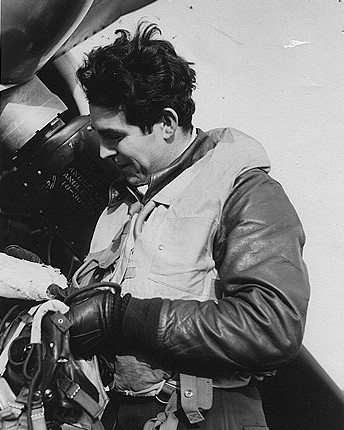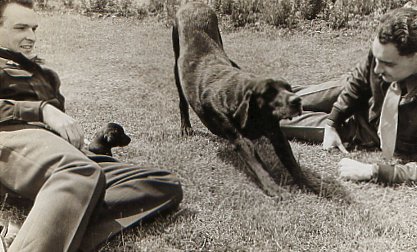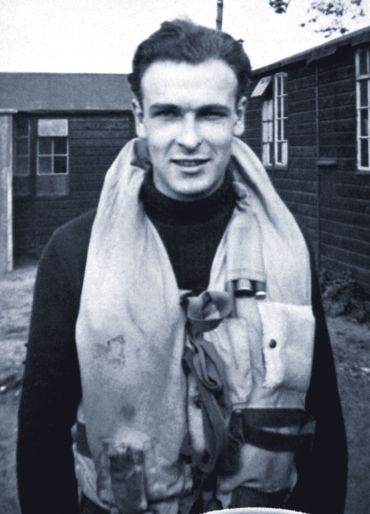On 30 January 1944, Capt. Raymond Care led the Fourth Fighter Group on a dive-bombing mission to the Gilze Rijen Aerodrome, with two sections in each squadron loaded with 500-pound bombs and the other two sections flying cover. The group hit a fuel dump and one of the runways. While the bombs were falling, the top cover was attacked by 15 to 20 Bf 109s. Lt. Raymond Clotfelter’s section had dodged four diving Bf 109s when he spotted a Bf 109 “coming in at 9 o’clock and when he started to pull deflection on me, I called a break and immediately flicked over into an aileron turn. I saw three other enemy aircraft off to my right approximately 1500 yards away. I decided I could catch them, so I pushed everything to the firewall and closed very quickly.” When the Bf 109s recovered from their dives, “I pulled deflection and opened fire,” said Clotfelter. “After a short burst, I pushed my nose through again and fired a longer burst. I closed to 100 yards, seeing strikes all over the cockpit, pieces falling off the tail and a fire. I had to break off to the right and as I did, I passed within a wing span of his plane.” The plane dove to earth and exploded.

Raymond Clotfelter
Capt. “Mike” Sobanski was leading the top cover, and one Bf 109 made a pass at his section. “As he broke away, I saw another Bf 109 dive head-on past us, and I followed him down,” Sobanski reported. “I gave him a short burst in a 70-degree dive, observing no strikes, He started pulling up, turning left and I fired a 20-degree deflection shot. I observed strikes in the wings and near the cockpit. A large patch of white smoke came out after my last burst and he flicked left, smoking badly. Lt. (Howard) Moulton, my No. 2, saw him go down in flames after he flicked.”

Mike Sobanski (left) and James Goodson relax between missions.
While the top cover was engaged, another group of 109s appeared behind the planes that had just bombed. The Mustangs thought they were friendly and orbited to join up, according to Lt. Paul Ellington. “They turned out to be all Bf 109s, about six or eight in number. We engaged them immediately and three of them dived for the deck.”
Lt. Kendall “Swede” Carlson knocked down a Bf 109, the saw another P-47 with a Messerschmitt behind it. “Lt. Ellington cut inside of me and took him off the 47’s tail,” said Carlson. The 109 hit in a pall of smoke and flame on a mud flat. Additional victories fell to Lt. Vermont Garrison and Lt. Duane Beeson.
January 31, 2013
Categories: 4th Fighter Group . Tags: 4th Fighter Group, Duane Beeson, Howard Moulton, Kendall Carlson, Mike Sobanski, Paul Ellington, Raymond Care, Raymond Clotfelter, Vermont Garrison . Author: obscureco . Comments: Leave a comment



